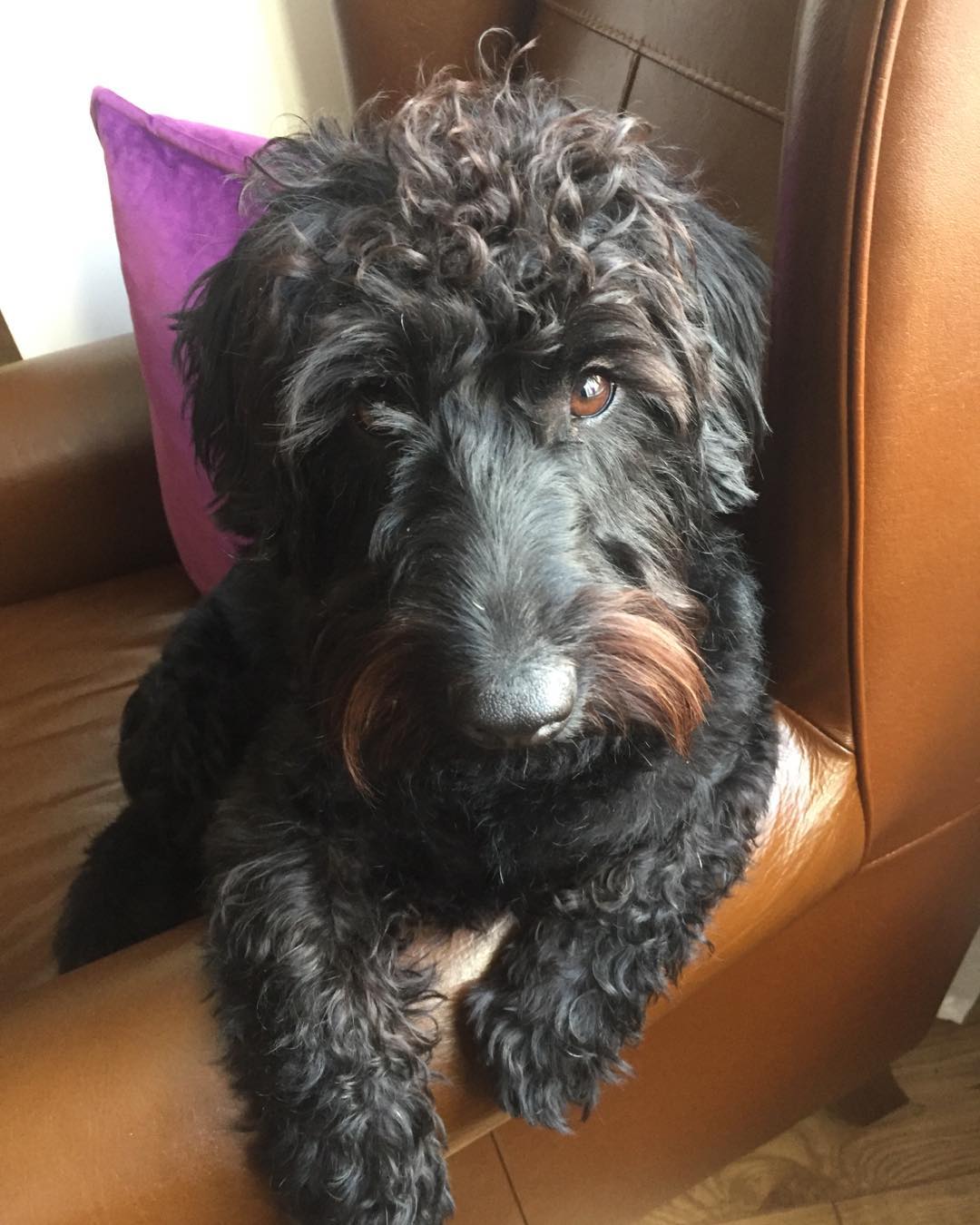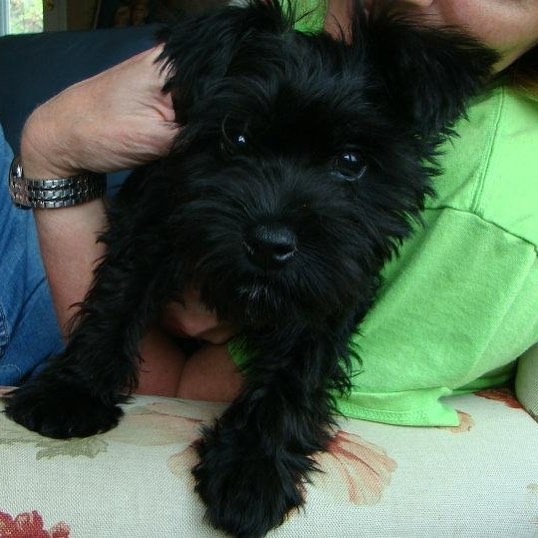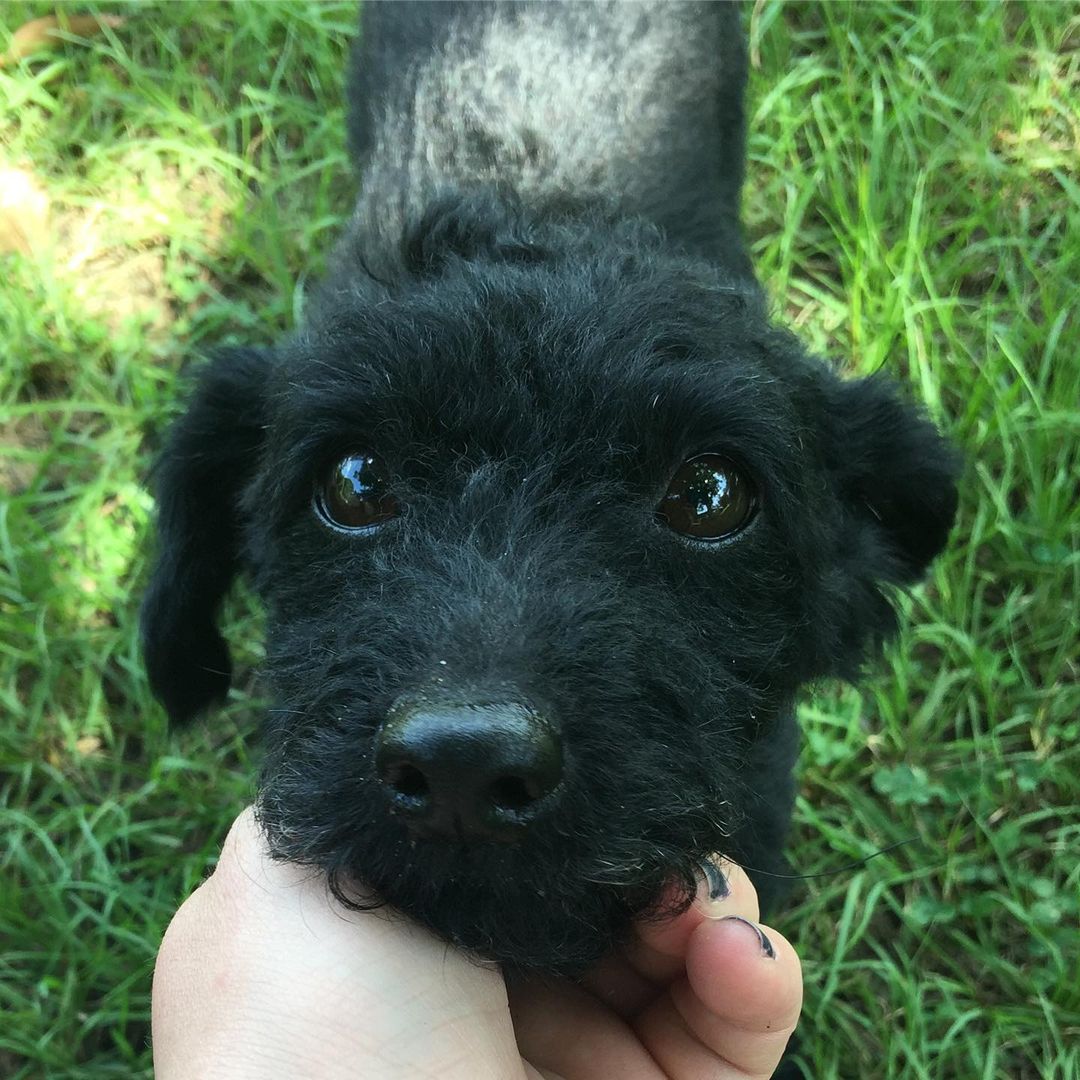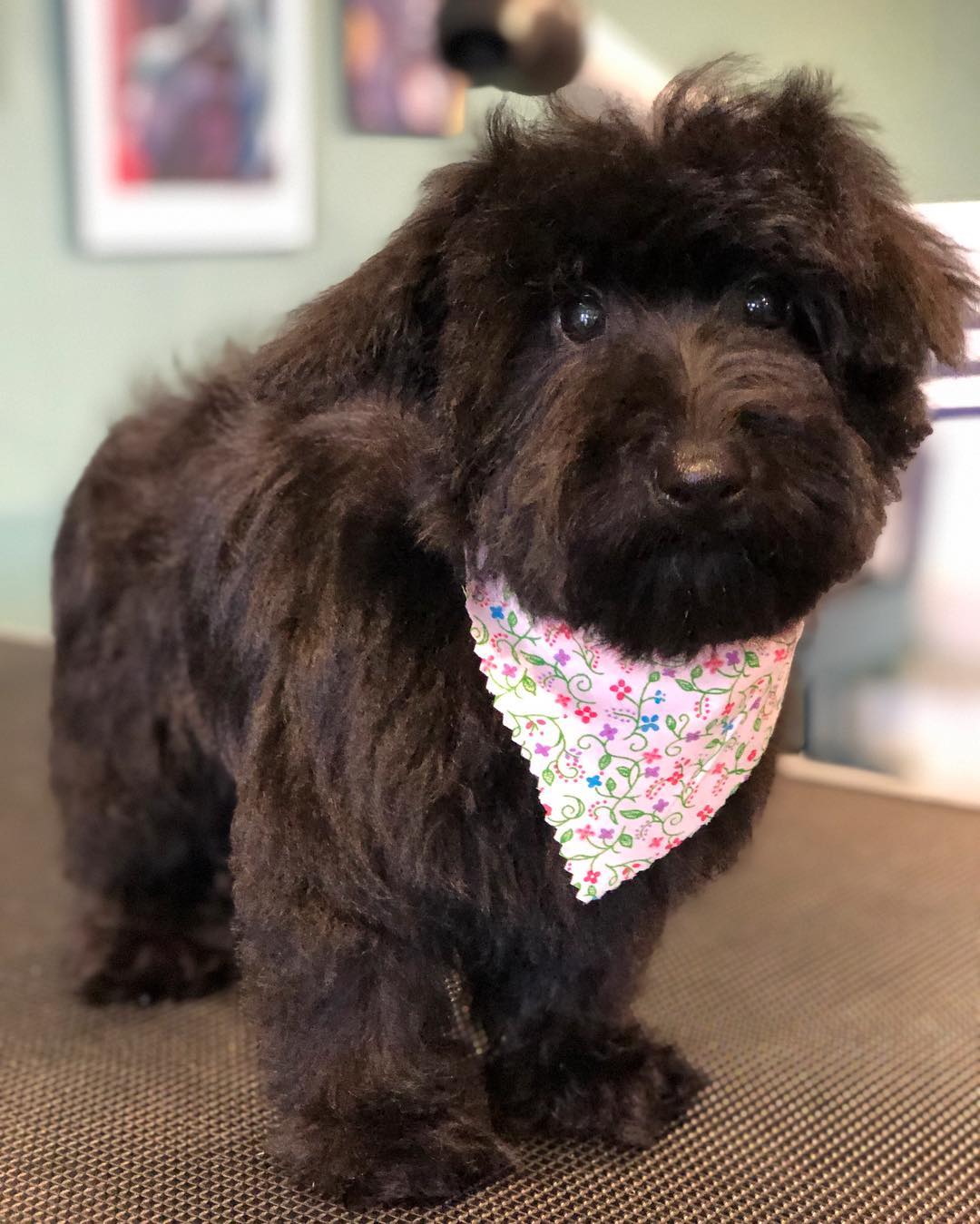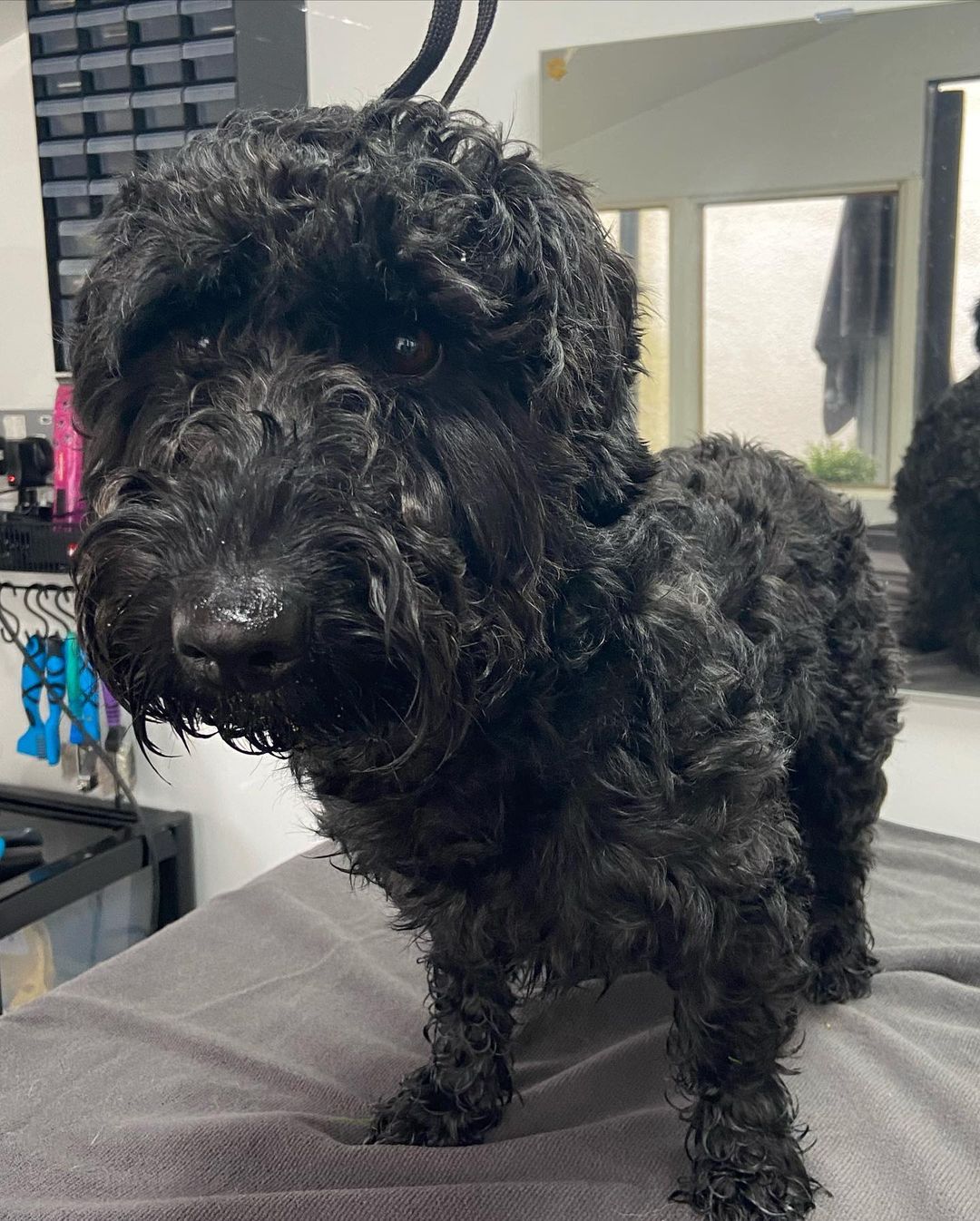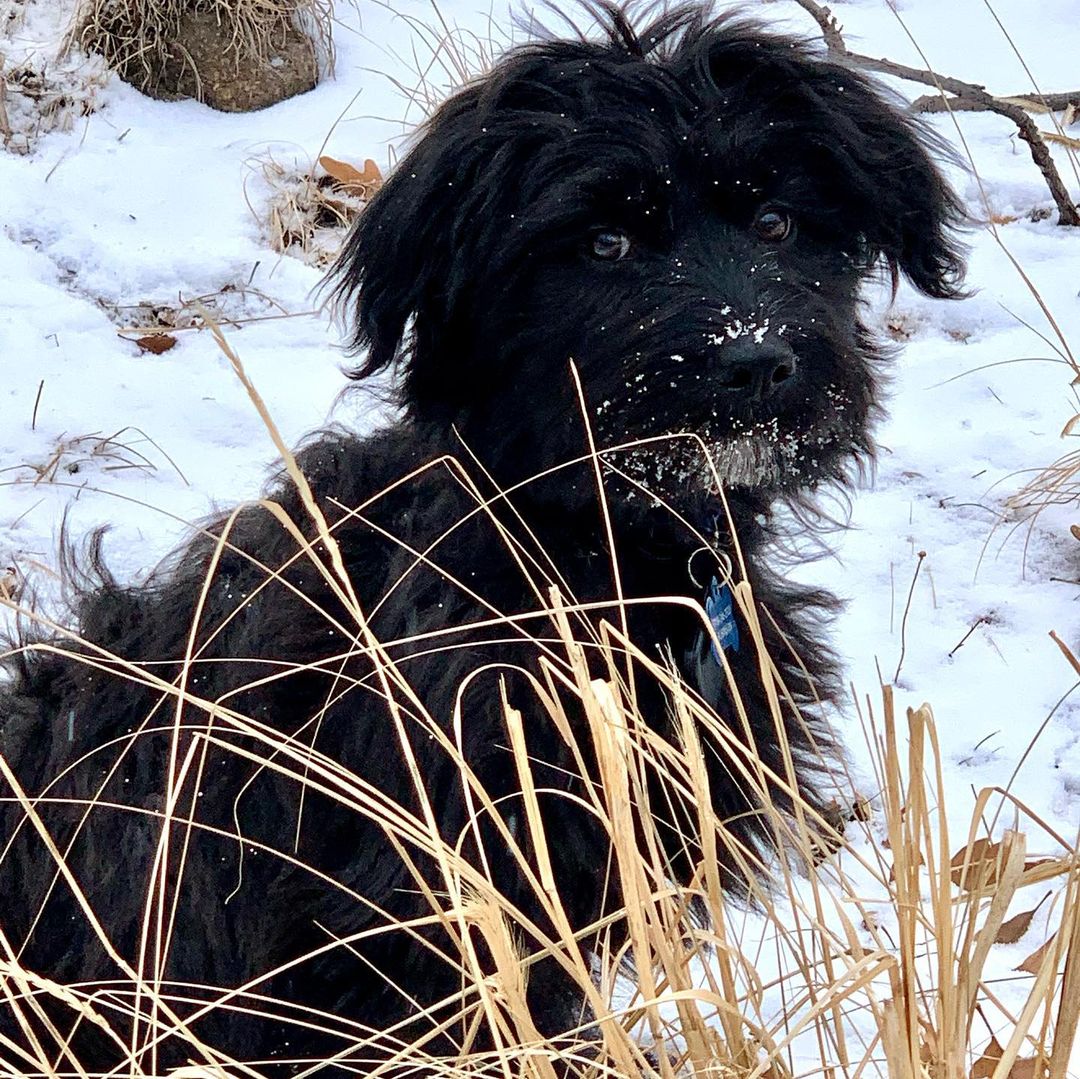If you’re bringing home a new dog and want to keep an eye on the adorable Scoodle crossbreed, you are not alone.
The Scoodles are becoming increasingly popular, but there is still so much you won’t know about them!
Don’t worry, this article is totally focused on anything Scoodle hoping will help you decide if he would be the perfect pup for you.
Who is the Scoodle Dog? Read on to find out!
Meet the Scoodle!
The Scoodle, also affectionately known as the Scottie Poo, Scottish Schoodle, Scottish Terrierpoo, and Scottish Terrier Poodle Mix, is a cross between the purebred Scottish Terrier and the purebred poodle.
This crossbreed is equipped with everything that looks good, lots of intelligence, and loads of personality!
The Scoodle is a first-generation crossbreed, however, which means there are likely many unknowns about him.
But what exactly is a crossbreed and why is there controversy around the subject?
Just take a look.
Why is there controversy with designer dogs?
As mentioned earlier, the Scottish Terrier Poodle mix is a crossbreed, which means that it is the offspring of the Purebred Poodle and the Purebred Scottish Terrier.
You may also have heard the term designer dog or hybrid dog.
These are all terms that are used to refer to an intersection, e.g. B. Scoodle.
But if the Scoodle is a crossbreed mix, doesn’t that make him a mutt?
Not necessarily.
While this question is part of the debate when it comes to hybrids, practitioners insist that there is a huge difference between mutts and hybrids.
By definition, a crossbreed is a dog that emerged from two specific breeds.
A mutt has a number of different races in its bloodline.
To find out more about this topic, visit us here.
The rest of the controversy surrounding the intersection is a little more complex.
Hybrid power
It’s no secret that purebred dogs are prone to many inheritable health problems due to generic overbreeding.
Proponents of crossbreeding claim that crossbreeding could be a solution to these genetic defects.
Others, however, shake their heads.
They claim that crossbred dogs can be just as susceptible to certain health disorders as purebred dogs, if not more.
If you’d like to learn more about other common intersections, click them here.
Studies are still ongoing on the controversy.
While we don’t exactly know if crossbred dogs are healthier than purebred dogs, it’s still important to know as much about your potential crossbreed before you get it.
With that in mind, let’s learn about the history of the Scoodle.
Origin of the Scoodle
The Scoodle dog is still a first-generation mixed breed, which means it hasn’t been around for long.
Because of this, his exact origin is uncertain, but we can still get an idea of his lineage and what makes him so unique by looking into the history of his purebred parents, the poodle, and Scottish terrier.
We’ll start with the poodle.
Origin of the poodle
The poodle is a famous dog known for its imaginative haircut and reputation.
It is believed that the poodle originated in France and came from Germany over 400 years ago.
Originally duck hunting dogs, poodles were known for their swimming skills.
Indeed, this is where her extravagant haircuts come.
The poodle’s thick, curly fur cut short in some areas while remaining puffy in others, it helped protect the dog from the harsh elements of the water as it swam after praying!
The poodle later became something of a fashion statement among the nobles in France, and his ability to please the masses also made him an excellent entertainer.
It was not uncommon to find a poodle to star in a circus or put on street shows.
Today’s poodle
Today, the poodle is an incredibly popular family pet, admired for its intelligent mind and family-friendly behavior.
At number seven out of 194 on the American Kennel Club’s (AKC) list of the most popular dog breeds, the poodle comes in three sizes including standard, miniature, and toy.
Now for the Scottie!
Origin of the Scottish Terrier
The Scottish Terrier, or Scottie as it is sometimes called, comes from the Scottish Highlands, where it earned its money by hunting rats, foxes, and badgers.
The Scottie is an old breed. Some experts suspect that he is the oldest of the Highland Terriers!
Despite its origins as a farm dog, the Scottish Terrier became popular with the kings, especially in the 17th century when the Scottish-born King James I began giving the Scottish Terrier as a gift to his friends and acquaintances.
Scottish Terriers made their way to America in 1883 and were officially registered with the American Kennel Club just two years later.
History buffs will realize that perhaps one of America’s most famous Scotties during World War II belonged to President Franklin Delano Roosevelt.
Today is Scottie
Not as popular as the poodle, the lovable Scottish Terrier sits 58th among the AKC’s most popular breeds.
With stories as fascinating as the Scottie and the Poodle, it’s no wonder the Scoodle crossbreed is growing in popularity.
Well, how can we expect the Scoodle to look?
What does my Scoodle look like?
Since the Scoodle is a crossbreed, it is next to impossible to pinpoint its appearance as accurately as possible in purebreds.
The Poodle and Scottie are very different in appearance, and their offspring, the Scottie-Poodle mix, could inherit a variety of traits from a purebred parent.
It’s really left to chance and genetics, but to get a better idea of what the Scoodle might look like, let’s take a look at the physical appearances of the Poodle and Scottie.
Characteristics of the parent breed
While there are three size variations, the miniature poodle will most likely be chosen to breed with the Scottish Terrier to create the Scoodle.
The miniature poodle weighs 10 to 15 pounds and stands at around 10 to 15 inches.
The Scottish Terrier weighs an average of 18 to 22 pounds and is approximately 10 inches tall.
The size of your Scoodle depends on the size of the parent Poodle element.
Since the chances are that your Scoodle’s Poodle parent is a Miniature Poodle, there is a high probability that you can expect your Scoodle to be a small to medium-sized dog.
Define the characteristics of the Scoodle
Both the Scottish Terrier and the Poodle are hypoallergenic, which means they don’t get lost.
They are therefore ideal for those who suffer from allergies or who do not want to deal with loose hair in the home.
The poodle has a slender, muscular body and thick, curly coat that comes in three colors:
The Scottie is more compact with a longer body and shorter legs.
It has a wiry top layer that covers a softer, very thick undercoat.
The Scottish Terrier’s coat is also available in three color variants:
- black
- Wheaten Yellow
- Brindle
Remember, since the Scoodle is a crossbreed, you can get a variety of the above traits.
However, you can expect it to be hypoallergenic with textured hair that is either curly or wavy.
But what about the Scoodle’s temperament? Read on to find out!
Scoodle temperament and personality traits
The Scottie Poodle Mix is known for its playful nature and loyal disposition.
Like its purebred parents, the Scoodle will most likely be confident, spunky, and intelligent.
But what else could he inherit from his Poodle and Scottie parents?
Well, just like with the look, the Scoodle temperament will depend on genetics.
Is the sporty and proud like the poodle or independent and spirited like the Scottie?
If your Scoodle is pursuing their poodle side, you can expect them to be very smart and have an affinity for showmanship and a love of water.
However, if your Scoodle ultimately prefers their Scottie heritage, they can be sassy, confident, and very playful!
Scoodle could inherit from one of the ancestors
Your Scoodle could also have a number of purebred parenting traits, and you won’t know until you have him.
This is part of the mixed-breed dog controversy.
Fortunately, both the Poodle and Scottie have been known to do well in older families with older, more respectful children.
They are adaptable dogs who perform great in many home settings, provided their exercise and play needs are met.
And while the Scoodle is a friendly and easy-going family dog in all circumstances, we always recommend early socialization and obedience training to make sure he is healthy and happy early on.
Scoodle grooming and general grooming
Both the Poodle and Scottie need a lot of grooming when it comes to grooming. So you can expect your Scoodle to need a similar amount.
Poodle grooming
For example, the poodle needs to be brushed daily if its owners opt for a typical poodle cut.
However, there is the option of cutting your hair short and giving it a manageable cut. Most poodles require professional grooming.
Scottie grooming
The Scottish Terrier needs grooming and hand-brushing its wiry coat at least three times a week.
If owners choose to cut their Scotties’ coats, the thick undercoat will “take over” and is easier to work with. The maintenance can take up to six weeks.
Both breeds require an occasional bath and need regular nails trimmed to avoid breakage.
Your ears should be cleaned regularly to avoid infection.
Although hypoallergenic, a potential Scoodle owner should prepare for grooming the grooming, as both of the Scoodle’s purebred parents have more sophisticated coats.
Training requirements
The Poodle is highly intelligent and wants to be amazed, while the Scottie is more independent and does not tolerate long workouts.
Since the Scoodle is a mix of the two, ease of training depends on the traits it inherits from its purebred parents.
The most important thing to remember is to always use positive reinforcement and kind words.
Keep the workout short, no more than fifteen minutes, and create positive rewards.
Don’t use harsh words or swear words when trying to exercise your Scoodle.
It won’t help him learn any faster and can actually get in the way of teaching.
As mentioned earlier, we recommend early socialization and obedience training to ensure Scoodle is well rounded throughout his life.
Average Scoodle lifespan and health issues
Identifying certain health issues with Scoodle could be complicated considering he’s a crossbreed.
However, by looking at both of its purebred parents, you can prepare yourself for any possible health issues your Scoodle may face.
The poodle, with a lifespan of 10 to 18 years, is best suited for:
- Hip dysplasia
- progressive retinal atrophy
- epilepsy
- Addison’s disease
- Thyroid problems
- Hypoglycemia
- inflation
- Dislocation of the patellas
- Tracheal collapse
- dental problems
- Legg-Calve-Perthes disease
- Sebum inflammation
The Scottie has a lifespan of around 12 years and can be prone to:
- Cataracts
- progressive retinal atrophy
- von Willebrand disease
- Brain tumor
- Bladder cancer
- Bladder stones
- Cushing’s disease
- Hypothyroidism
- neurological problems
- deafnes
- shemophilia
Since your Scoodle is a crossbreed, early health screening can help you avoid future problems that he may inherit from his purebred parents.
What is the ideal house type for the Scoodle?
The Scoodle is a friendly dog who makes good families and loves playtime, children, and other pets.
The perfect companion for life with a new puppy
Keep in mind, however, that caring for the child might prove to be the try as his purebred parents need a serious support when it comes to their coats.
Also, the Scottie is a bit more independent than the Poodle, and if your Scoodle inherits this trait, training could be a little more difficult.
If you have the patience to exercise your Scoodle, and the time to exercise and clean it properly so its coat doesn’t become painfully matted, and if you have older, respectful children who won’t be too rough with your Scoodle, then you cross might be right for you!
How do I find a Scoodle puppy?
Scoodle puppies are adorable, but how do you get one?
Once you’ve decided that the Scoodle is right for you, here are the best tips for finding a puppy.
Breeder
As you go through a breeder, prepare to spend anywhere between $ 500 and $ 1,000 depending on the breeder and whether the parents of the Scoodle parents are showing any quality.
Walking through a breeder gives you an opportunity to ask questions about the health and temperament of the parent breeds and previous litters.
Reputable breeders should also be able to provide you with certificates showing that their dogs have been health tested and are ready to go home with you.
